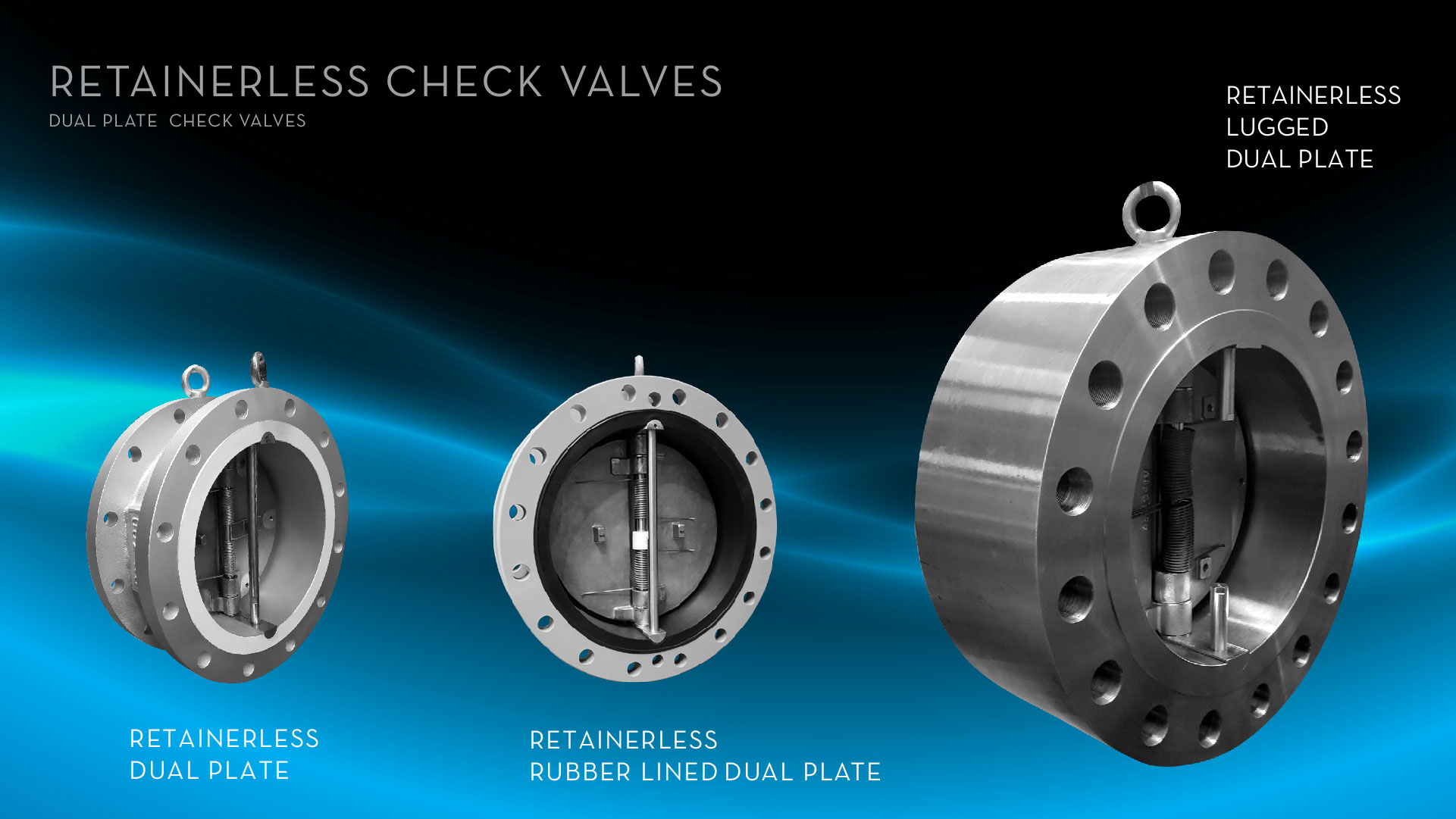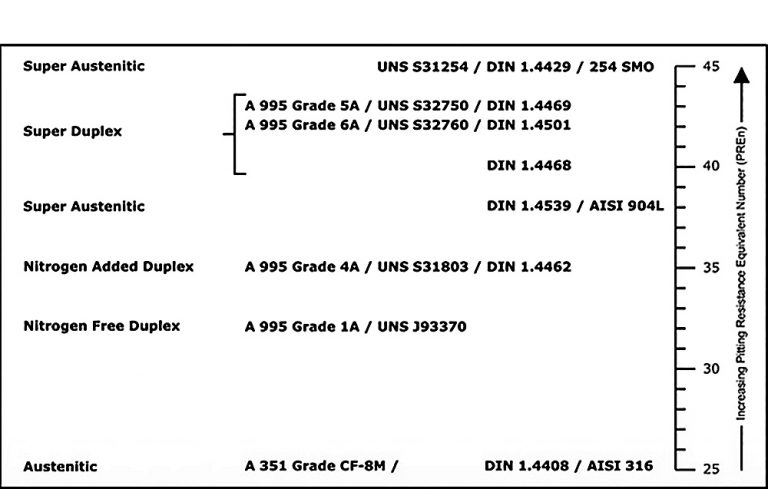

RETAINERLESS DUAL PLATE CHECK VALVE
WATER TECHNOLOGIES – IN HOUSE MANUFACTURING
DESIGN FEATURES
Retainerless type without holes drilled in the body avoiding possible leaks to the external, mainly used for Oil and gas applications, also recommendable for steam/vapour applications.
Our patent retainerless type does not contain small screws or auxiliary elements to assemble the internals. Available in wafer, flanged and solid lugged in different sizes
APPLICATIONS
Oil and gas applications
Steam/vapour applications
TECHNICAL DATA
RANGE: DN 50 TO DN 600 600
MATERIALS
Ductile Iron, Steel, Stainless steel, superduplex,brz-alu
SPECIAL ALLOYS
Over the years the most frequent used materials on the desalination market have been the so called “Superstainless” or “ superaustenitic”, which anti corrosive properties are superior to austenitic steels.
Due to the price increment on the prime materials and as an alternative more competitive for these materials, Duplex and Superduplex of second generation have been introduced in the market of desalination.
The family of Duplex and Super duplex Stainless steels offer a significant advantage over Standard austinic steels.
The 50/50 ferrite /austenite structure gives improved corrosion and abrasion resistance together with improved tensile and yield properties.
Duplex Composition range is obtained by a complex structure, and therefore requires a much greater degree of technology, melting and process control compared with austenitic stainless steel constructions.
CASTFLOW VALVES S.L. has been experiencing the production of check valves in Duplex stainless steel for the last years, increasing our knowledge on the complex casting technology.
PITTING RESISTANCE EQUIVALENT NUMBER (PREN)
The resistance to pitting of an alloy is of vital importance , particularly so in handling seawater.
Assessment of resistance to pitting is often made by use of a pitting resistance equivalent number which, when this takes account of Cr Mo and N is referred to as a PREn Number.
Calculation is made on the basis of the following.
PREN= %Cr+ 3.3%Mo16%N


